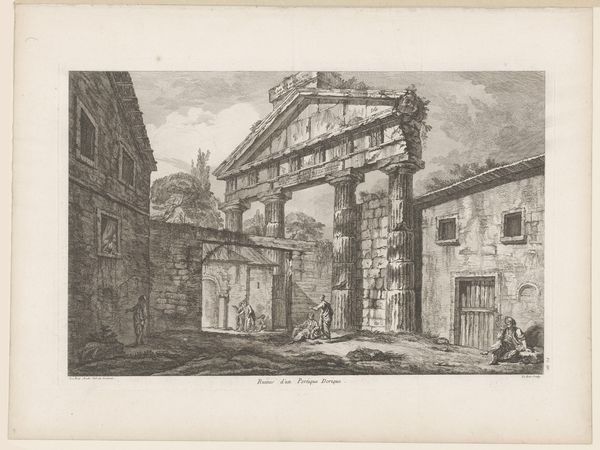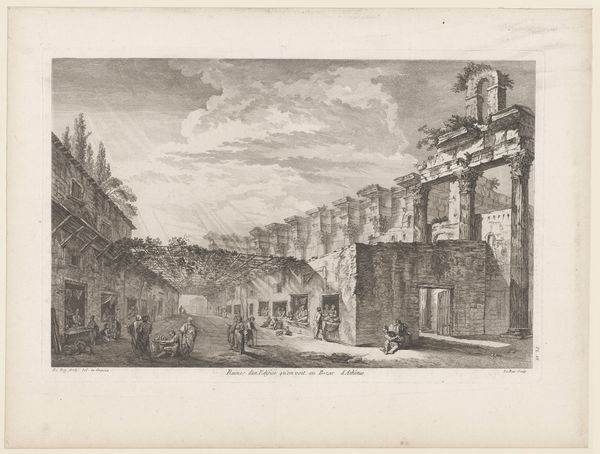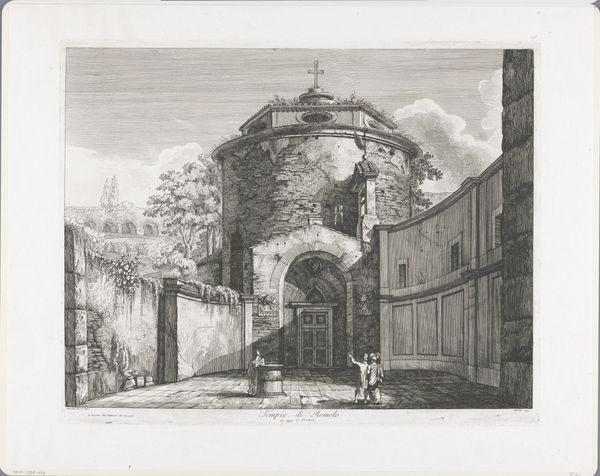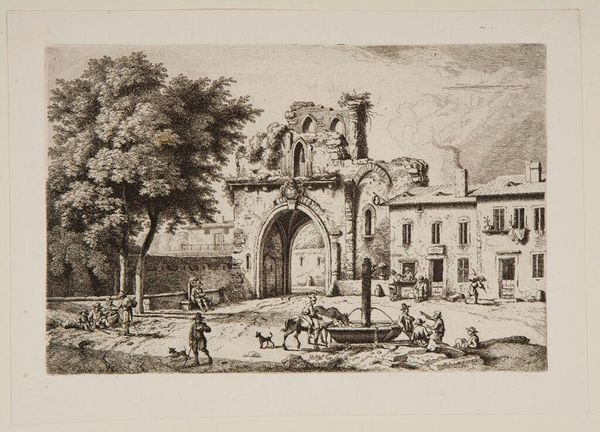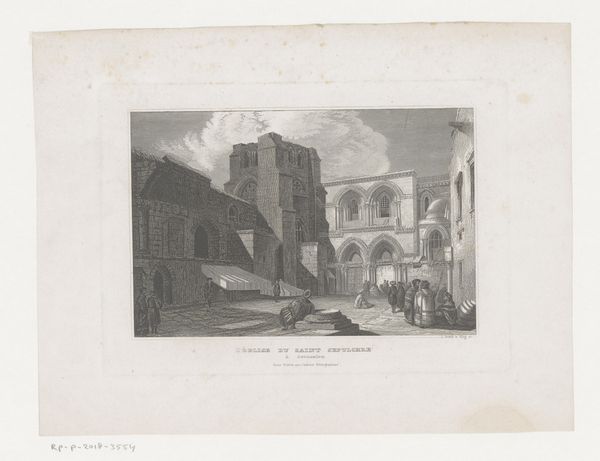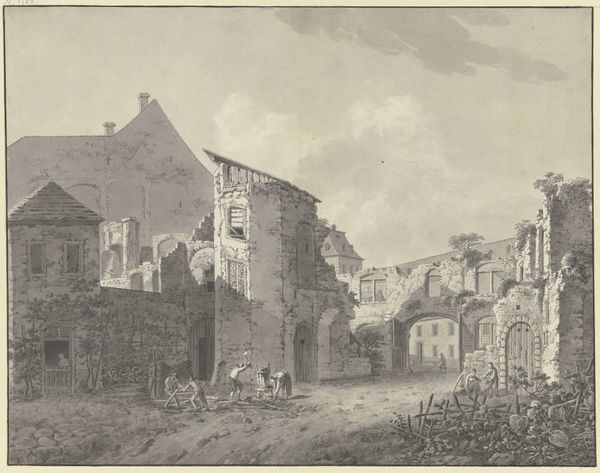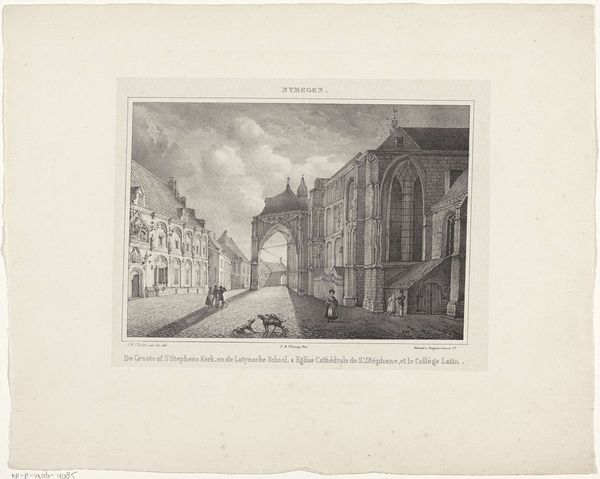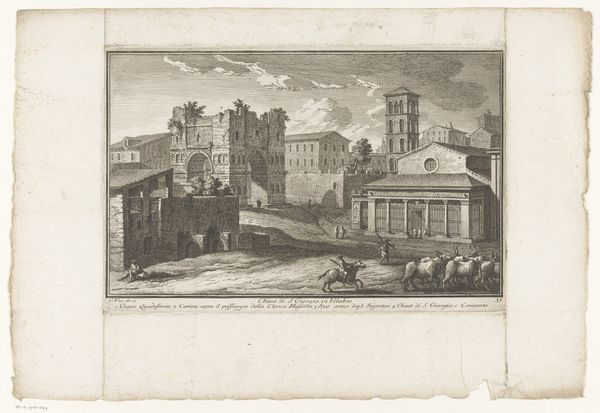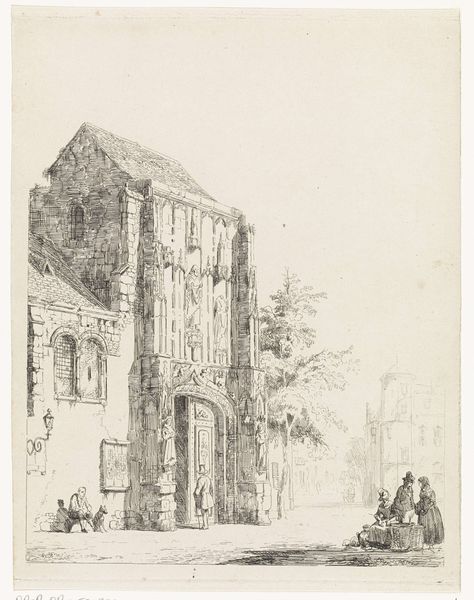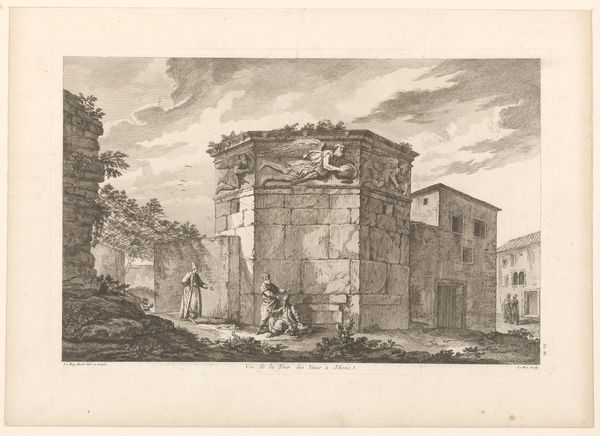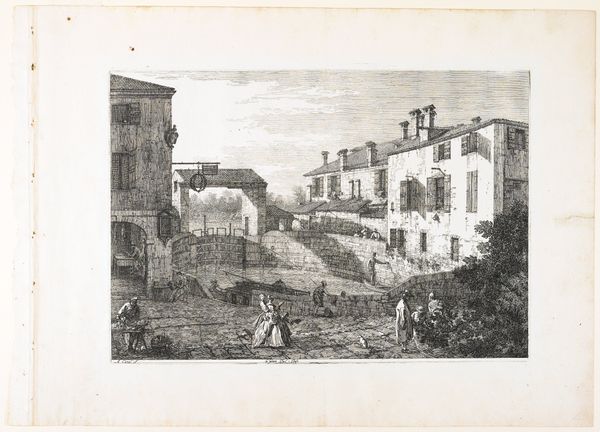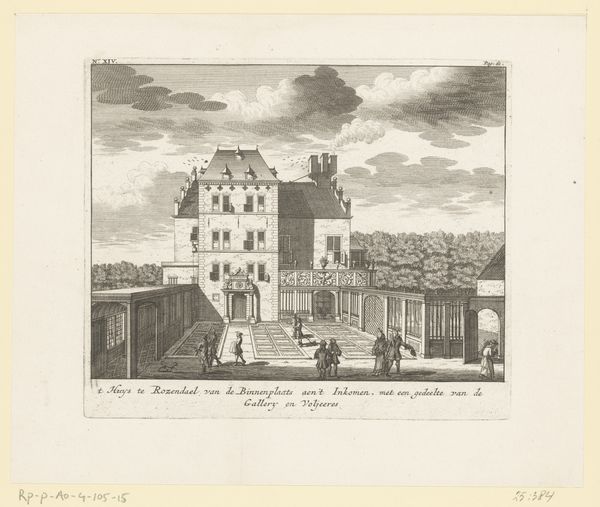
print, engraving
#
neoclacissism
# print
#
landscape
#
classicism
#
cityscape
#
history-painting
#
engraving
Dimensions: height 312 mm, width 465 mm
Copyright: Rijks Museum: Open Domain
Curator: What a fascinating tableau! Here we have Jacques Philippe Le Bas's 1758 engraving, "Gezicht op het monument van Lysicrates in Athene," part of the Rijksmuseum collection. Editor: It certainly evokes a sense of history, doesn’t it? But, initially, I’m struck by how immediate and tactile it feels, given it’s a print. The textures of the stone… I want to run my hand along that wall. Curator: That's the appeal of neoclassicism, right? It revives that connection to a supposedly idealized past, grounding the present in perceived ancestral values. The Monument of Lysicrates itself, laden with symbolism of victory, stands tall. See the repeated use of the acanthus leaf, representing enduring life and immortality? Editor: But consider how it's rendered. Engraving, especially at this scale, speaks of meticulous, repetitive labor. Each line painstakingly etched, creating value and depth. This wasn't some impulsive sketch but a deliberate act of reproduction and dissemination. Curator: True. It’s about making these symbols accessible, amplifying their meaning. Notice how Le Bas positions figures throughout, emphasizing their relationship to the monument. Those seated figures under the arch, in quiet discourse, hint at a philosophical connection to the classical world. Editor: And then observe the others—perhaps merchants, soldiers—passing by. They introduce a contemporary element into this classical idyll. Their presence reveals the constant flux between history and the present-day uses of a space. The materiality, the engraving, allows that wider consumption, in the streets, into homes... Curator: It poses a complex tension, doesn’t it? The heroic monument, rendered with a sort of idealized vision, meets the everyday reality of human life. Perhaps to illustrate how ideals can endure but always exist in dynamic dialogue with lived experience. Editor: Ultimately, this artwork makes me consider not only the symbolism, but the hand that held the tool and how its movement contributed to neoclassicism's material manifestation. Curator: A powerful convergence indeed; visual language meeting the labor behind its lasting form!
Comments
No comments
Be the first to comment and join the conversation on the ultimate creative platform.
